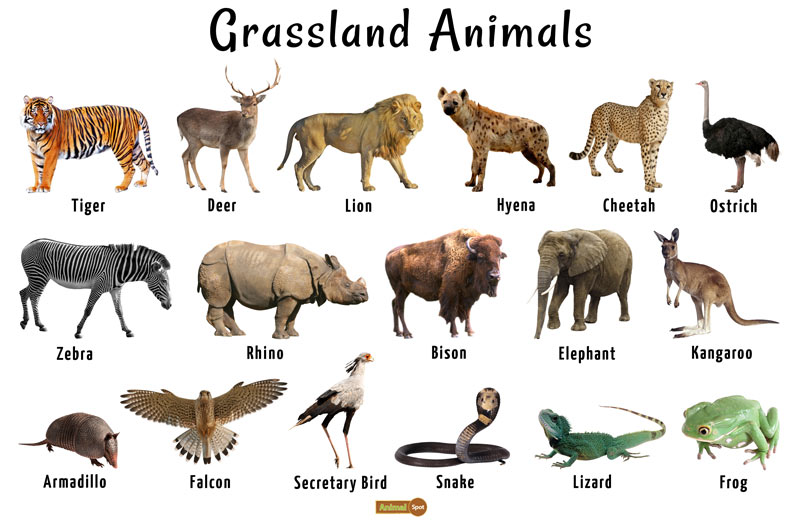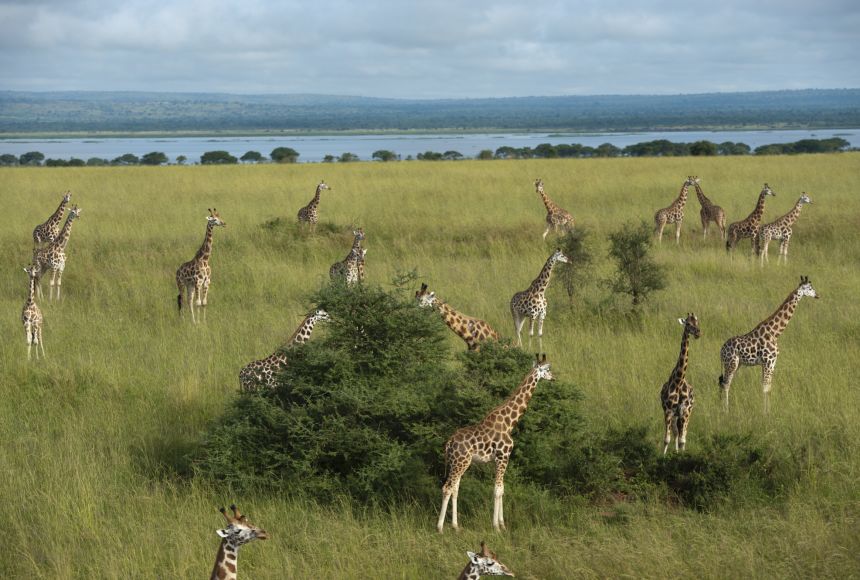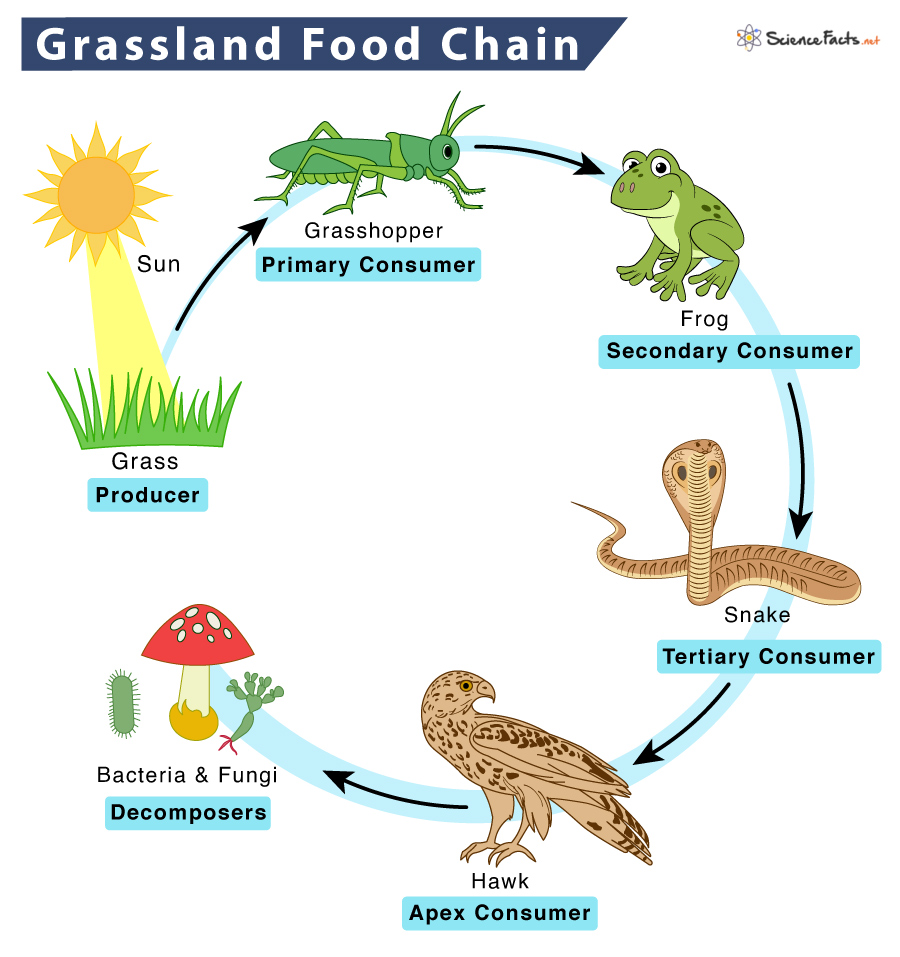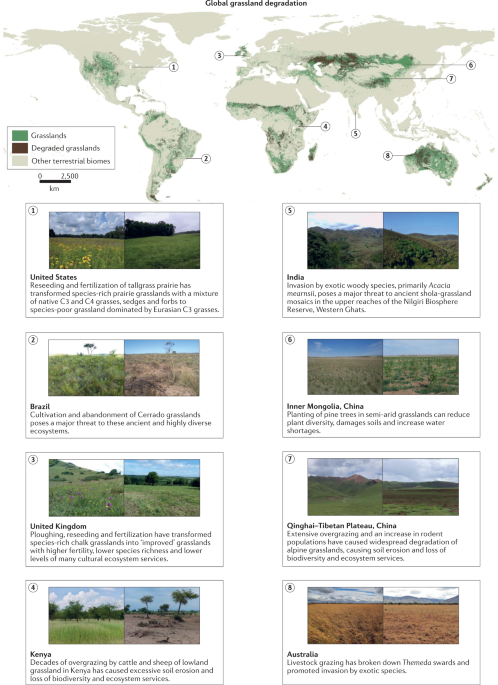Topic what are the biotic and abiotic factors of an ecosystem: Explore the dynamic interplay between living organisms and their physical environment as we delve into the biotic and abiotic factors of an ecosystem, shedding light on the foundational elements that sustain life and biodiversity on our planet.
Table of Content
- What are the primary components of an ecosystem and how do they interact?
- Overview of Biotic and Abiotic Factors
- Examples of Biotic Factors and Their Roles
- Examples of Abiotic Factors and Their Importance
- Interactions Between Biotic and Abiotic Factors
- Impact of Biotic and Abiotic Factors on Ecosystem Health
- Role of Producers, Consumers, and Decomposers
- YOUTUBE: Biotic and Abiotic Factors in Ecosystems
- Effect of Climate and Temperature on Ecosystems
- Soil Composition and Its Effect on Plant Life
- Water Resources and Aquatic Ecosystems
- Human Impact on Biotic and Abiotic Factors
What are the primary components of an ecosystem and how do they interact?
An ecosystem is made up of both biotic and abiotic components. Biotic factors are living things in the ecosystem, such as plants, animals, and microorganisms. Abiotic factors, on the other hand, are non-living things in the ecosystem, such as temperature, sunlight, water, soil, and air.
The primary components of an ecosystem and how they interact can be outlined as follows:
- Producers: Producers, also known as autotrophs, are the plants and some types of bacteria that obtain energy from sunlight through photosynthesis. They convert sunlight, carbon dioxide, and water into glucose and oxygen.
- Consumers: Consumers, also known as heterotrophs, are organisms that cannot produce their own food and rely on consuming other organisms. They include herbivores (eat plants), carnivores (eat other animals), and omnivores (eat both plants and animals).
- Decomposers: Decomposers, such as bacteria and fungi, break down dead plants and animals into simpler substances. They play a vital role in recycling nutrients back into the ecosystem.
- Abiotic Factors: Abiotic factors are the non-living components of an ecosystem that influence the organisms living within it. These factors include temperature, sunlight, water availability, nutrients in the soil, air quality, and geological factors.
The interaction between these components is vital for the functioning of an ecosystem. Producers convert solar energy into food, which is then consumed by consumers. When consumers consume plants or other animals, they obtain energy and transfer it up the food chain. Decomposers break down the remains of dead organisms, returning nutrients to the soil and allowing them to be reused by producers.
Abiotic factors also play a crucial role in shaping the ecosystem. Temperature, for example, affects the metabolic rates of organisms and determines which species can thrive in a given habitat. Sunlight provides energy for photosynthesis and influences the productivity of plants. Water availability is essential for the survival of all organisms, while air quality and soil composition affect the types of organisms that can live in an ecosystem.
Overall, the interactions between biotic and abiotic factors within an ecosystem are complex and interconnected. Changes in one component can have cascading effects throughout the ecosystem, highlighting the delicate balance required for its stability and health.
READ MORE:
Overview of Biotic and Abiotic Factors
Biotic and abiotic factors are the essential components that make up an ecosystem. Biotic factors refer to all living things in an ecosystem, including plants, animals, fungi, and microorganisms, each playing a unique role in maintaining the balance of life. On the other hand, abiotic factors are the non-living elements that significantly influence the environment and the organisms living within it. These include sunlight, temperature, water, soil composition, air, and minerals. Together, these factors interact in complex ways to shape the diversity, structure, and function of ecosystems around the globe.
- Biotic Factors: These are the dynamic and living components of an ecosystem that interact with each other and their non-living surroundings. They include various species of plants and animals, as well as bacteria, fungi, and other microorganisms.
- Abiotic Factors: These encompass the physical and chemical elements of an environment that affect living organisms. Key abiotic factors include climate, water, soil, light availability, and atmospheric gases.
The interplay between biotic and abiotic factors determines the health and sustainability of an ecosystem. Understanding these interactions is crucial for conservation efforts and for predicting how ecosystems may respond to changes in their environment, such as those induced by climate change or human activities.

Examples of Biotic Factors and Their Roles
Biotic factors play a crucial role in shaping ecosystems, each contributing uniquely to the balance and interdependence of life forms. Here are some examples of biotic factors and the vital roles they perform:
- Plants (Producers): Serve as the primary producers in an ecosystem, converting solar energy into chemical energy through photosynthesis. This energy is the foundation of the food web, supporting herbivores and the predators that feed on them.
- Animals (Consumers): Animals are classified into herbivores, carnivores, omnivores, and detritivores based on their diet. Each plays a specific role in the food chain, from consuming plants to controlling populations and recycling nutrients.
- Microorganisms (Decomposers and Detritivores): Bacteria, fungi, and other microorganisms break down dead organic matter, returning nutrients to the soil, which is essential for plant growth. This decomposition process is vital for nutrient cycling and ecosystem sustainability.
- Pollinators: Insects, birds, and some mammals pollinate plants, enabling the reproduction of many plants and the production of fruits, seeds, and new plant generations.
- Pathogens: While often seen negatively, pathogens can play an important role in controlling population sizes, promoting genetic diversity, and maintaining ecosystem balance.
These biotic factors interact with each other and with abiotic factors, forming complex relationships that sustain the ecosystem. Understanding these roles highlights the importance of biodiversity and the intricate connections that support life on Earth.
Examples of Abiotic Factors and Their Importance
Abiotic factors are non-living components that have a significant impact on the environment and the organisms that inhabit it. These factors are critical in shaping ecosystems, influencing the distribution, behavior, and survival of living organisms. Here are some key abiotic factors and their importance:
- Light: Sunlight is essential for photosynthesis, the process by which plants produce food. Light availability affects plant growth and, by extension, the entire food web.
- Temperature: Temperature regulates the metabolic rates of organisms and determines the geographical distribution of species. Extreme temperatures can limit the survival of living beings.
- Water: Water is crucial for all forms of life. It affects organisms" physiological processes and shapes ecosystems, particularly in aquatic and dry land environments.
- Soil Composition: The type, pH, and nutrient content of soil influence the types of plants that can grow, thereby affecting the animals that rely on those plants for food and habitat.
- Air: The composition of the atmosphere, especially oxygen and carbon dioxide levels, is vital for respiration in animals and photosynthesis in plants.
- Salinity: Salinity affects the distribution of aquatic life forms. Some organisms are adapted to fresh water, while others thrive in saltwater environments.
- Wind: Wind can affect plant growth, water evaporation rates, and temperature. It also plays a role in seed dispersal and the pollination of plants.
These abiotic factors interact with biotic elements, influencing ecosystem structure, function, and resilience. Understanding their importance helps in assessing ecosystem health and managing natural resources sustainably.

Interactions Between Biotic and Abiotic Factors
The intricate web of ecosystems is sustained through the continuous interaction between biotic and abiotic factors. These interactions are fundamental to the survival and productivity of ecosystems, influencing their structure, function, and overall health. Understanding these relationships is key to appreciating the complexity of ecological systems. Here"s how biotic and abiotic factors interact:
- Photosynthesis and Light: The process of photosynthesis in plants, a biotic factor, is driven by sunlight, an abiotic factor. This interaction is crucial for the production of oxygen and organic compounds, which are essential for the survival of most life forms.
- Soil and Plant Growth: Soil composition, an abiotic factor, affects the distribution and health of plants, a biotic factor. Nutrient-rich soils support diverse plant life, which in turn supports a variety of animal species.
- Water Availability and Organism Survival: Water, an abiotic factor, is essential for the physiological processes of living organisms (biotic factors). Its availability influences species distribution, plant growth, and animal hydration.
- Temperature Regulation and Metabolic Rates: Temperature, an abiotic factor, influences the metabolic rates of organisms (biotic factors). It can affect reproduction, migration patterns, and survival rates of various species.
- Oxygen Levels and Respiration: Oxygen concentration in air or water (abiotic factor) directly impacts the respiration process of animals and plants (biotic factors), affecting their energy production and overall health.
These examples highlight the dynamic balance and dependency between living organisms and their physical environment. The resilience and functionality of ecosystems depend on the harmonious interplay between biotic and abiotic factors, illustrating the interconnectedness of all components within an ecosystem.
Impact of Biotic and Abiotic Factors on Ecosystem Health
The health and stability of ecosystems are profoundly influenced by both biotic and abiotic factors. These elements interact in complex ways, contributing to the resilience, productivity, and biodiversity of ecosystems. The balance between these factors is essential for ecosystem functions such as nutrient cycling, energy flow, and species diversity. Understanding their impact is crucial for conservation and management efforts. Here are several ways in which biotic and abiotic factors affect ecosystem health:
- Regulation of Populations: Predation, disease, and competition among species (biotic factors) can regulate population sizes, preventing any one species from overwhelming an ecosystem. This balance is crucial for maintaining the diversity and productivity of communities.
- Nutrient Cycling: Decomposers like fungi and bacteria (biotic factors) break down dead organic matter, recycling nutrients back into the soil, where they can be reused by plants (another biotic factor). This cycle is influenced by soil pH and moisture (abiotic factors), demonstrating the interconnectedness of these components.
- Climate Effects: Climate patterns (abiotic factors) such as temperature and rainfall significantly impact ecosystem health by influencing the distribution of species, timing of reproduction, and availability of resources.
- Soil Fertility: Soil composition and structure (abiotic factors) affect the types of plants that can grow, which in turn influences the types of animals that can survive. Healthy soil contributes to a rich and diverse ecosystem.
- Water Quality and Availability: Clean, accessible water (an abiotic factor) is crucial for all living organisms. Pollution and changes in water availability can have significant impacts on species health and distribution.
These interactions show that changes in abiotic factors can have direct and indirect effects on biotic factors, and vice versa, ultimately influencing the overall health and functioning of ecosystems. Protecting these complex relationships is key to ensuring the longevity and sustainability of our natural world.
Role of Producers, Consumers, and Decomposers
In every ecosystem, the roles of producers, consumers, and decomposers are pivotal for maintaining the balance of life and ensuring the flow of energy and nutrients. These roles form the foundation of food chains and webs, driving the ecological processes that sustain biodiversity. Here’s how each group contributes to ecosystem dynamics:
- Producers (Autotrophs): These are primarily green plants and algae that produce their own food through photosynthesis, using sunlight, carbon dioxide, and water. Producers form the base of the food web, supplying energy to all other organisms in the ecosystem.
- Consumers (Heterotrophs): Consumers rely on other organisms for food. They are divided into primary consumers (herbivores that eat producers), secondary consumers (carnivores that eat herbivores), and tertiary consumers (carnivores that eat other carnivores). Omnivores, which eat both plants and animals, also play a crucial role.
- Decomposers: Decomposers, including bacteria and fungi, break down dead organic material, returning vital nutrients to the soil. This process is essential for nutrient cycling and supports the growth of new plants, thus sustaining the producer population and, consequently, the entire ecosystem.
The interaction between producers, consumers, and decomposers is essential for the stability and productivity of ecosystems. Producers capture energy from the sun and convert it into forms usable by consumers, who, in turn, provide nutrients for decomposers. Decomposers break down dead matter, closing the loop by feeding the soil and supporting new plant growth. This cycle ensures the continuous flow of energy and the recycling of nutrients, highlighting the interconnectedness of all living things.
Biotic and Abiotic Factors in Ecosystems
Dive into the fascinating world of ecosystems and discover the interconnectedness of all living organisms in this captivating video. Explore how plants, animals, and their environments thrive together and witness the beauty and balance that exists within our natural world.
Biotic and Abiotic Factors in Ecosystems
Uncover the secrets behind the delicate balance between biotic and abiotic factors that sustain life on our planet. Journey through this enlightening video as it takes you on a captivating exploration of the essential elements and living organisms that shape our environment, offering a deeper understanding of our interconnected world.
Effect of Climate and Temperature on Ecosystems
Climate and temperature are critical abiotic factors that significantly influence the structure, function, and distribution of ecosystems around the world. They affect the physical environment and the life cycles of organisms, shaping biodiversity and ecosystem productivity. The impact of climate and temperature on ecosystems is profound and multifaceted:
- Species Distribution: The climate determines the types of plants and animals that can survive in a particular area. Different species have varying tolerances for temperature and moisture, influencing their geographical distribution and abundance.
- Seasonal Cycles: Temperature changes throughout the year affect seasonal behaviors in organisms, such as migration, hibernation, and breeding. Climate patterns also influence the timing of flowering and fruiting in plants.
- Water Availability: Climate affects precipitation patterns, impacting the availability of water in ecosystems. This, in turn, influences plant growth and the availability of water for animals, affecting the entire food web.
- Ecosystem Productivity: The overall productivity of an ecosystem, including the rate of photosynthesis in plants, is heavily influenced by temperature and sunlight availability, which are governed by climate.
- Extreme Weather Events: Climate change is leading to more frequent and severe extreme weather events, such as hurricanes, droughts, and floods. These events can cause immediate and long-term damage to ecosystems, affecting their ability to recover and maintain balance.
Understanding the effects of climate and temperature on ecosystems is crucial for predicting how these systems may respond to global climate change. It underscores the importance of adopting conservation and management strategies that help ecosystems adapt to changing environmental conditions.

Soil Composition and Its Effect on Plant Life
Soil composition is a fundamental abiotic factor that has a profound impact on plant life, ecosystem diversity, and productivity. The physical and chemical properties of soil, including its texture, structure, pH, and nutrient content, play critical roles in supporting plant growth and health. Here"s how soil composition affects plant life:
- Nutrient Availability: Soil provides essential nutrients like nitrogen, phosphorus, and potassium, which are vital for plant growth. The availability of these nutrients depends on the soil"s chemical makeup and its ability to retain and release these elements.
- Water Retention and Drainage: The texture of the soil, determined by the size and arrangement of its particles (sand, silt, clay), influences its water retention capacity and drainage properties. Plants require a delicate balance of water availability—too much or too little can be detrimental.
- Root Penetration and Support: Soil structure affects the ease with which plant roots can penetrate the soil and anchor themselves. Compacted soil or soils with high clay content can limit root growth and reduce plant stability and nutrient uptake.
- pH Levels: The pH of the soil influences the solubility of nutrients, affecting their availability to plants. Some plants thrive in acidic soils, while others prefer alkaline conditions. Soil pH can be modified through agricultural practices to suit specific plant needs.
- Aeration: Good soil aeration is necessary for the exchange of gases between the soil and the atmosphere. Oxygen is essential for root respiration, and carbon dioxide, produced by root metabolism, needs to be released into the atmosphere.
The interaction between soil composition and plant life is a key factor in determining the distribution of plant species and the overall biodiversity of an ecosystem. Healthy, well-balanced soil supports a diverse range of plant life, which in turn supports animal populations and maintains ecological balance.
Water Resources and Aquatic Ecosystems
Soil composition is a fundamental abiotic factor that has a profound impact on plant life, ecosystem diversity, and productivity. The physical and chemical properties of soil, including its texture, structure, pH, and nutrient content, play critical roles in supporting plant growth and health. Here"s how soil composition affects plant life:
- Nutrient Availability: Soil provides essential nutrients like nitrogen, phosphorus, and potassium, which are vital for plant growth. The availability of these nutrients depends on the soil"s chemical makeup and its ability to retain and release these elements.
- Water Retention and Drainage: The texture of the soil, determined by the size and arrangement of its particles (sand, silt, clay), influences its water retention capacity and drainage properties. Plants require a delicate balance of water availability—too much or too little can be detrimental.
- Root Penetration and Support: Soil structure affects the ease with which plant roots can penetrate the soil and anchor themselves. Compacted soil or soils with high clay content can limit root growth and reduce plant stability and nutrient uptake.
- pH Levels: The pH of the soil influences the solubility of nutrients, affecting their availability to plants. Some plants thrive in acidic soils, while others prefer alkaline conditions. Soil pH can be modified through agricultural practices to suit specific plant needs.
- Aeration: Good soil aeration is necessary for the exchange of gases between the soil and the atmosphere. Oxygen is essential for root respiration, and carbon dioxide, produced by root metabolism, needs to be released into the atmosphere.
The interaction between soil composition and plant life is a key factor in determining the distribution of plant species and the overall biodiversity of an ecosystem. Healthy, well-balanced soil supports a diverse range of plant life, which in turn supports animal populations and maintains ecological balance.
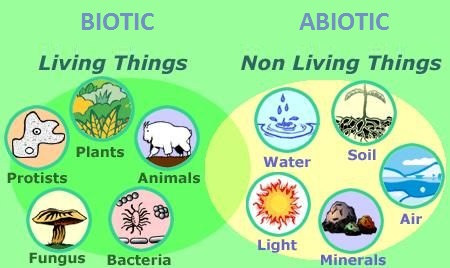
READ MORE:
Human Impact on Biotic and Abiotic Factors
Humans have a profound impact on both biotic (living) and abiotic (non-living) factors of ecosystems. Through various activities, humans can alter these factors in ways that can either benefit or harm the environment. Understanding these impacts is crucial for developing strategies to minimize negative effects and promote ecosystem health.
Positive Impacts
- Conservation Efforts: Through the establishment of protected areas, wildlife reserves, and national parks, humans help preserve and restore habitats, protecting biodiversity and helping maintain ecosystem services.
- Restoration Projects: Human-led initiatives to restore forests, wetlands, and other natural habitats contribute to the recovery of ecosystems that have been degraded or destroyed.
- Sustainable Practices: The adoption of sustainable agricultural, forestry, and fishing practices helps reduce environmental footprint and conserves both biotic and abiotic resources.
- Pollution Control: Efforts to reduce pollution through cleaner production methods, waste management, and emission controls help protect both water and air quality, directly benefiting ecosystem health.
Negative Impacts
- Deforestation: The clearing of forests for agriculture, logging, or development reduces biodiversity, disrupts ecosystems, and alters climate and water cycles.
- Pollution: The release of pollutants into the air, water, and soil can degrade natural habitats, harm wildlife, and disrupt the balance of ecosystems.
- Climate Change: Human activities contributing to greenhouse gas emissions lead to climate change, affecting weather patterns, sea levels, and the distribution of species.
- Overexploitation: Overfishing, hunting, and harvesting at unsustainable rates deplete populations of various species, leading to imbalances within ecosystems.
Strategies for Mitigation
To mitigate the negative impacts of human activities on biotic and abiotic factors, it is essential to adopt integrated management approaches that include:
- Implementing stricter environmental regulations to control pollution and manage natural resources sustainably.
- Encouraging the use of renewable energy sources to reduce greenhouse gas emissions and combat climate change.
- Supporting community-based conservation programs that engage local populations in protecting their natural resources.
- Promoting education and awareness campaigns to foster a culture of environmental responsibility and conservation.
By taking these steps, humans can significantly reduce their impact on ecosystems and help ensure a healthy balance between biotic and abiotic factors for future generations.


